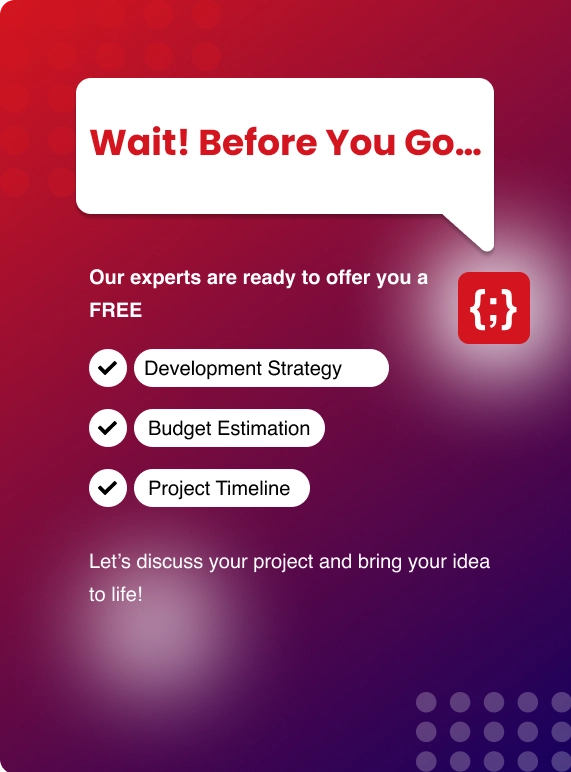When you hear the term “predictive analytics,”
it might sound high-tech or complicated. But all it means is using data to make better guesses about the future.
Imagine you are running a store, and want to forecast how much inventory you will need next month or next quarter. You can do predictive analysis.
“Predictive analytics uses historical data, statistical algorithms, and machine learning techniques to predict future outcome.”
If you’ve ever wished you could peek around the corner and know what’s coming for your business or team, predictive analytics is probably what you’re looking for.
In this article, I’ll break down what predictive analytics is, how it works, and, most importantly, why it’s changing the way businesses of all sizes plan, grow, and make decisions.
What Exactly Is Predictive Analytics?
Predictive analytics is a way to use data—from sales numbers to weather trends—to guess what might happen next.
Think of it as the smart cousin of looking at last year’s sales to plan for this year. It uses math, statistics, machine learning, and sometimes artificial intelligence to spot patterns in piles of data. Then it uses those patterns to forecast the likely outcome.
If you’ve used Netflix, you’ve seen predictive analytics in action. Ever noticed how it just “knows” what show to recommend next? That's not magic—it’s math.
For example:
- An online store might use predictive analytics to figure out which customers are likely to buy again.
- A logistics company might predict delivery delays based on past weather and traffic data.
The Role of Predictive Analytics in Strategic Planning
Taking Guesswork Out of Decision-Making
I’ve worked with plenty of teams that used to make decisions by gut feel, or by copying whatever seemed to work for competitors. Predictive analytics moves things from guesswork to actionable insight.
When you add it into strategic planning, suddenly you can set targets that are grounded in reality—not just hopeful wishes. You can challenge your own assumptions, and actually see data to confirm or upend what you thought you knew.
Seeing Around Corners with Data
Maybe you’re planning a new product launch or wondering if you should expand to a new market. Wouldn’t it help to know if customer demand is likely to surge or slump next season? Or if one product could quietly become the runaway best-seller?
Predictive analytics helps you see these kinds of trends before they hit, reducing surprises.
Data-Driven Scenarios
Strategic planning is all about thinking through “What if?” questions. Predictive analytics lets you test out different scenarios much more accurately than the old spreadsheet method.
For example, what happens if your main supplier raises prices? How will your cash flow look if sales bounce 10% higher next quarter? The data guides you, not just a hunch.
The same idea applies to personal finances too. For example, predictive models can show how debt consolidation might change monthly payments or overall savings, helping people see the impact of different repayment choices before committing.
How Predictive Analytics Actually Works
I promise not to get too technical—but it helps to know a little about what’s happening behind the scenes:
Here’s a simple breakdown of the typical process for building predictive analytics models:
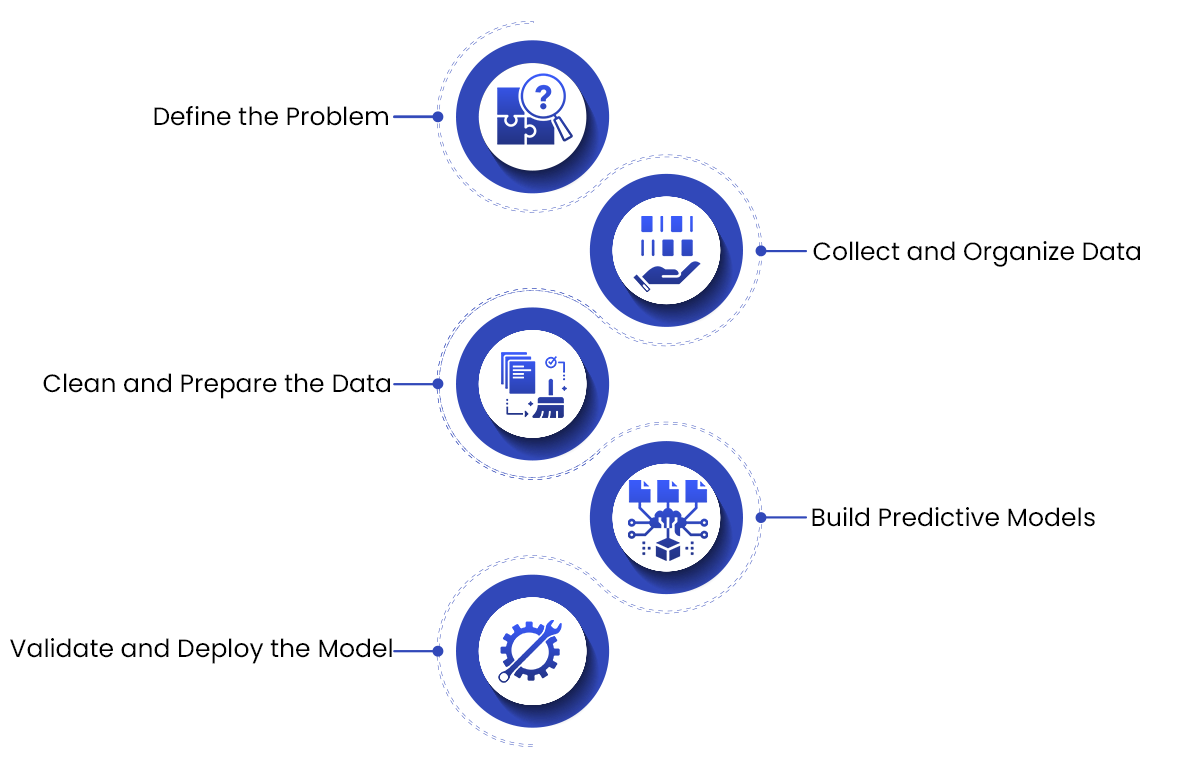
- Define the Problem
Every prediction begins with a clear question. This might be, “Can we detect fraudulent transactions?” or “What should our inventory levels be for the holiday season?” Having a specific goal shapes what data you’ll need and what kind of model will work best. - Collect and Organize Data
Your business could have years of past data or a constant stream of new information from customers. The next step is to gather this data from various sources and store it in a central place, like a data warehouse. This makes it easier to access and analyze. - Clean and Prepare the Data
Raw data often contains mistakes, missing pieces, or anomalies. Cleaning means fixing or removing these errors to make sure your model learns from accurate information. - Build Predictive Models
Data scientists then use different techniques—like machine learning algorithms, regression models, or decision trees—to create models that find patterns in your data and generate predictions. They train these models on historical data so the model can learn what outcomes to expect given certain inputs. - Validate and Deploy the Model
After building a model, it’s crucial to test how well it predicts new data. This might mean comparing its guesses to actual outcomes and tweaking the model to improve accuracy. Once satisfied, the model is put into use so business teams can start making decisions based on its insights.
Where Predictive Analytics Fits Across Different Business Functions
Let’s break down how predictive analytics helps various functions:
Marketing
- Target the right customers with the right offer at the right time.
- Predict which leads are most likely to buy, so you don’t waste marketing dollars.
Sales
- Anticipate which products or services will be hot next quarter.
- Improve cross-selling and upselling by predicting what customers need next.
Finance
- Forecast cash flow more precisely.
- Spot unusual spending or fraud patterns early.
Operations
- Plan inventory purchases with the help of demand planning software, which aligns supply with actual customer needs rather than just gut feeling.
- Schedule maintenance before machines break down, not after.
Human Resources
- Predict employee turnover so you can intervene with retention strategies.
- Forecast hiring needs based on seasonality or business growth.
Key Benefits of Strategic Planning
Let’s put it directly: predictive analytics gives businesses an edge. Here are some of the main benefits you’d notice:
1. Improved Forecasting
Instead of making educated guesses, forecasts become more like educated bets—backed by real data.
You’ll be more prepared for what’s ahead, rather than scrambling to react when things change suddenly.
2. Smarter Resource Allocation
No business has unlimited resources. Predictive analytics can help allocate budgets and people where they’ll have the most impact, avoiding overspending or shortages in any department.
3. Faster, More Confident Decisions
Decision-makers don’t have to wait for quarterly reports or “see how things play out.” Information comes in faster and more frequently, making it easier to act when needed.
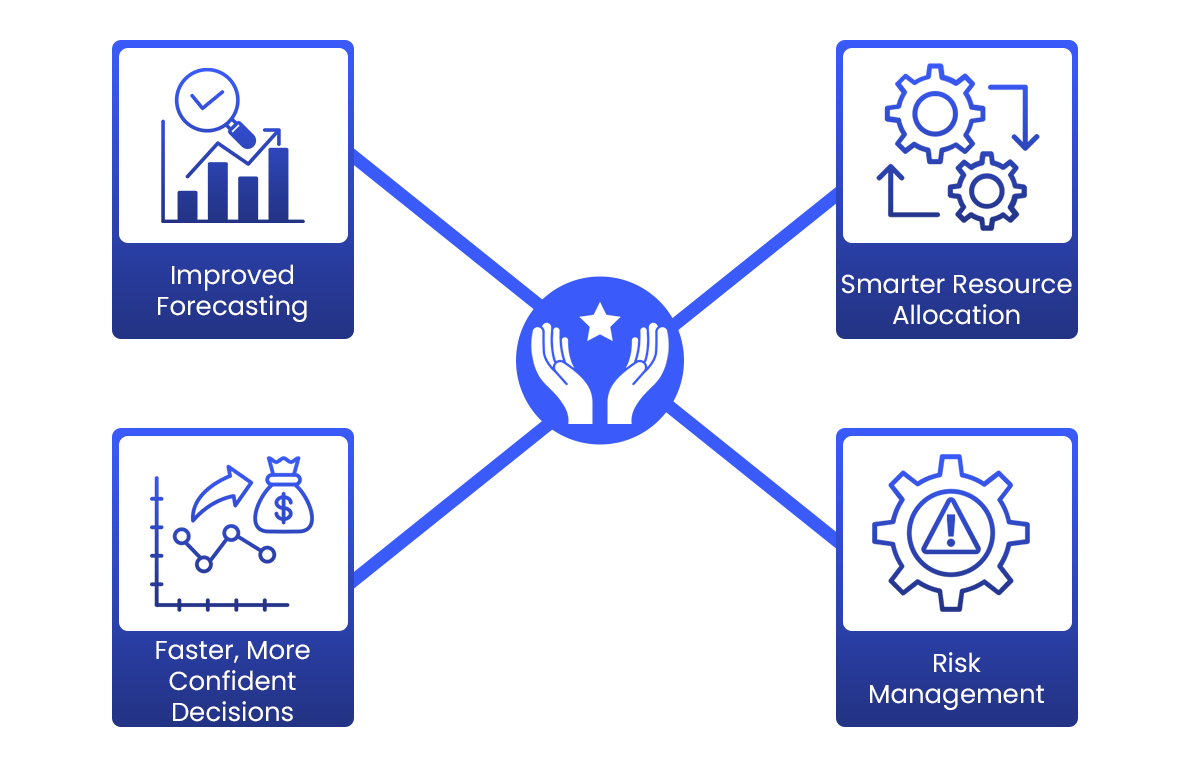
4. Risk Management
When you see early warnings of trouble—like demand dipping, parts shortages, or increasing customer churn—you can react before those problems snowball. That reduces risk, both financially and operationally.
Why Is AI a Big Deal Here?
Recently, I’ve seen more businesses add AI copilots to their analytics teams. Think of these as digital advisors—AI agents that help you sort through all the noise and focus on what matters most. If you’re flooded with reports or data dashboards, an AI copilot can point out the trend you should care about, or even suggest a plan of action.
An AI copilot works by:
- Searching massive databases for patterns faster than any person could.
- Highlighting risks or opportunities in plain language (no data science degree needed).
- Making suggestions backed up by data, not just random advice.
I find this is like having a super-analytical business partner who never gets tired. You stay in charge, but you're not working alone.
Steps to Get Started with Predictive Analytics in Your Business
Getting started can feel overwhelming, but here’s how I’d approach it with a friend:
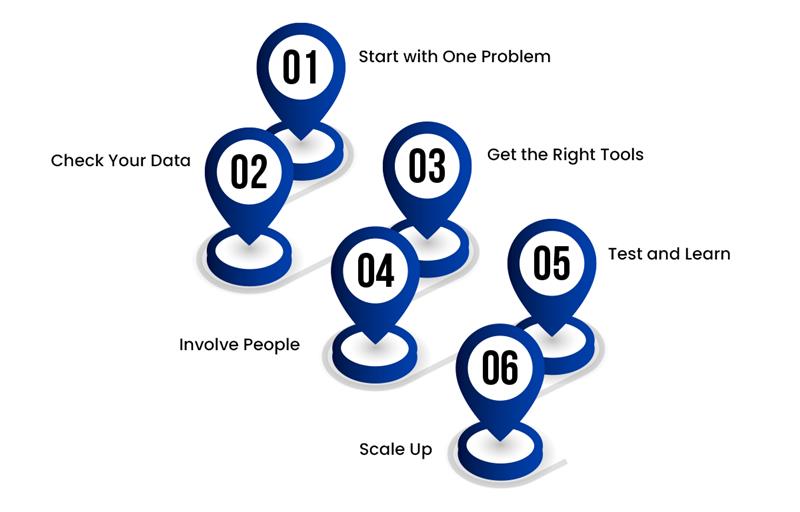
- Start with One Problem
Don’t try to “analyze everything.” Pick one problem you care about—maybe reducing stockouts, predicting customer churn, or forecasting next month’s revenue. - Check Your Data
Is your data organized, accurate, and complete? Garbage in, garbage out applies here. Tidy up any major gaps. - Get the Right Tools
You don’t have to build models from scratch. Many off-the-shelf software solutions let you run basic predictive analytics with just a few clicks. - Involve People
Make sure people across marketing, sales, finance, and operations are involved. They’ll help interpret the results and suggest useful tweaks. - Test and Learn
Don’t treat predictions as “set in stone.” Test your forecasts against what actually happens. Adjust your models as you go. - Scale Up
Once you see real results, you can expand analytics into other areas—maybe adding more complex AI copilots as your comfort with the data grows.
Pitfalls to Watch For
Nothing is perfect, so here are some pitfalls I warn friends about:
- Bad Data: If your data isn’t accurate or up-to-date, your predictions will be off.
- Overfitting: Sometimes models get “too good” at matching the past. They might struggle with new, unexpected events.
- Ignoring Human Input: Relying only on predictions and ignoring gut feeling or frontline feedback can cause mistakes.
- Analysis Paralysis: With so much data, decisions can slow down—always focus on what matters most.
The Future: How AI Copilots Will Change Strategic Planning
As more businesses use AI-driven agents, these digital copilots will go beyond just making predictions. They’ll help leaders understand why trends are changing, suggest new directions, and even trigger alerts when plans should shift.
- Personalization at Scale: Picture not just mass market forecasts, but forecasts tailored to each customer, product, or location.
- Always-On Monitoring: AI copilots don’t sleep—they constantly watch for changes and update plans, 24/7.
- Simplified Reporting: Instead of walls of charts, AI copilots might offer a plain-English summary: “Here's what changed, and here's what we recommend.”
This doesn’t mean you hand over control. Think of the AI copilot as your super-organized, never-tired assistant, making sure you don’t miss anything important, but always leaving the decisions up to you.
How Predictive Analytics Connects with Other Business Topics
As you dig deeper, you might want to explore related areas like:
- Data Visualization: Turning raw data into graphs that make insights crystal clear.
- Real-Time Analytics: Monitoring what’s happening right now, not just what happened last week.
- Business Intelligence Tools: Platforms like Tableau, Power BI, and Looker that make analytics user-friendly.
- Customer Relationship Management (CRM): Using predictive analytics to personalize interactions with each customer.
Connecting these areas creates a strong network of decision tools across your organization.
Common Questions About Predictive Analytics and Strategic Planning
Do I Need a Huge Data Team?
Not always. Many predictive analytics tools are now easy to use and cloud-based, so you don’t need a team of PhDs. If you can run Excel and read a dashboard, you can get started. Of course, if you want custom models, you might need some data expertise, but the entry bar has dropped a lot.
How Accurate Are the Predictions?
Like the weather forecast, predictions aren’t perfect. They’re better than guessing, though. Accuracy depends on the quality and amount of data you have—and how often you update your models. The more real-time and detailed your data, the better your results.
What Kinds of Data Do I Need?
You want data that’s recent, reliable, and closely tied to your decisions: sales numbers, customer behavior, website clicks, even economic indicators. If your past data is a mess, expect to do some cleanup first.
Will Predictive Analytics Replace Human Decision-Makers?
Not at all. It’s a tool—not a replacement. In my experience, the best results happen when leaders combine their intuition with insights from analytics. The analytics points you in the right direction, but your judgment still matters a ton.
How Predictive Analytics Improves Strategic Agility
If you’ve ever felt like your business just reacts to outside changes—customers, competitors, or trends—predictive analytics is the antidote. With solid forecasting, you’re steering the ship instead of just riding the waves.
Adapting to Change
With predictive analytics, the plan isn’t set in stone. As new data comes in, your forecasts and recommendations adapt. That means you’re less likely to be caught off guard by sudden shifts in the market or supply chain.
Scenario Planning
Teams don’t have to plan for just one possible future. They can model many scenarios (what if sales drop 5%, or surge 20%?), build contingency plans, and keep options open.
Final Thoughts
If you’re thinking predictive analytics is just for massive companies, think again. Businesses of every size—from local shops to global brands—are using it to get ahead. The real shift is moving from a “wait and see” mentality to an “anticipate and adapt” approach.
Remember:
Start simple and practical. Focus on one goal you care about.
Keep your data clean and relevant.
Use easy tools first, and don’t fear trying out AI copilots—they’re there to help, not to take over.
Let predictions guide you, but always apply your judgment.
If you keep those basics in mind, predictive analytics isn’t a buzzword anymore—it’s just good business sense.
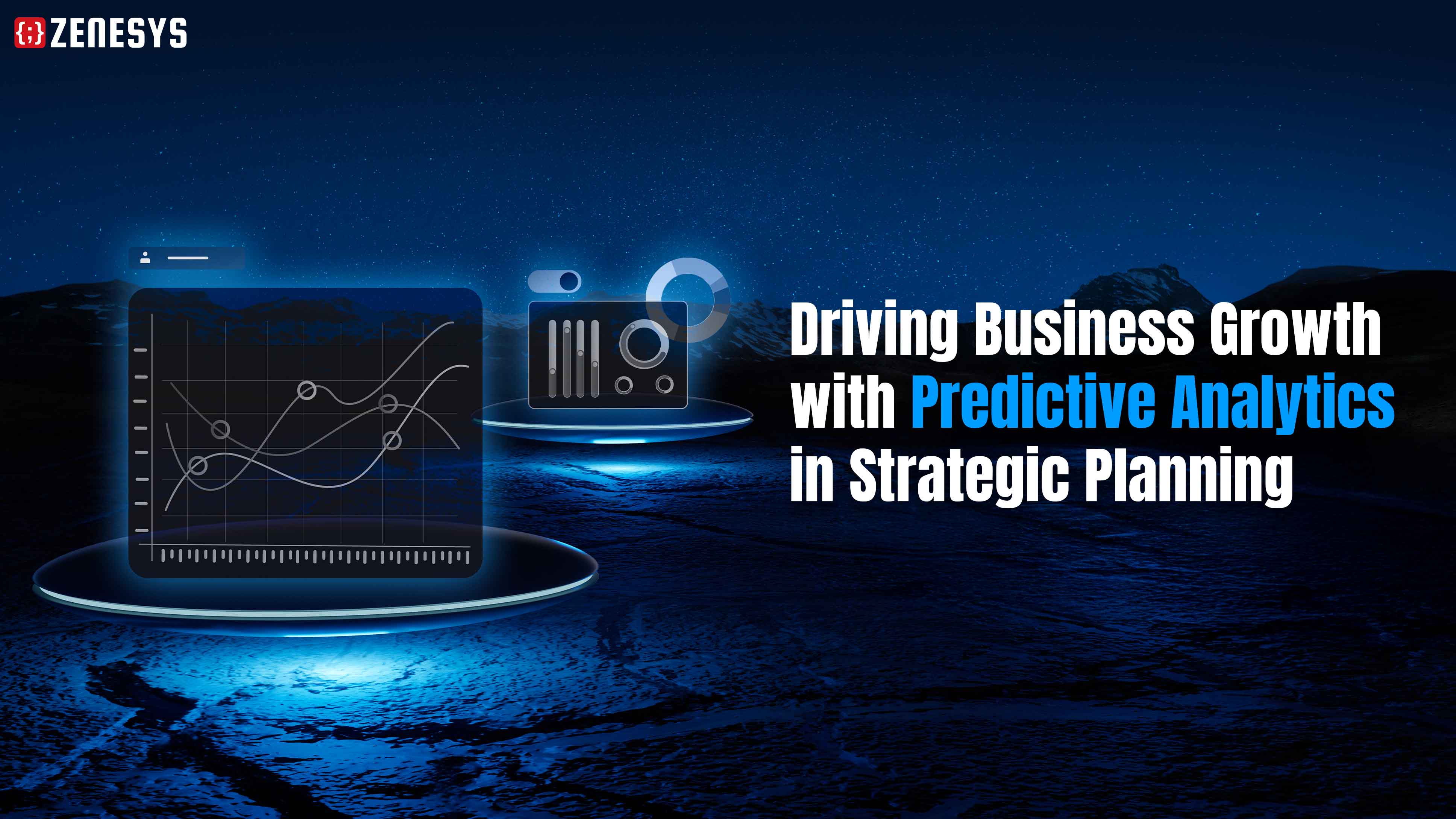

.webp?lang=en-US&ext=.webp)

.webp?lang=en-US&ext=.webp)

